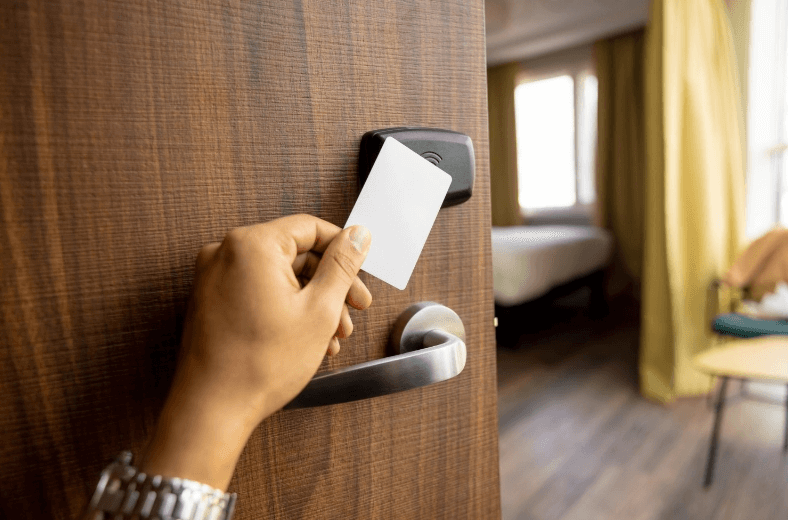
More Than Just a Key: Hotel Key Card Features You Might Not Know
Most hotel guests think a Hotel Key Card only opens the room door. That’s the basic function, but modern cards do far more. Hotels use them as part of a complete digital access ecosystem. The card connects guests, staff, and property systems. It supports payments, energy control, and tracking workflows. This shift started years ago as hotels moved from metal keys to magnetic stripes and later to RFID cards. Today, most global properties use contactless cards because they are safer and more difficult to clone. According to Hospitality Technology’s 2024 report, over 85% of new hotel installations prefer contactless access for reliability and hygiene. This shows how essential these cards have become.
The Role of Encoding Technology in Performance
The encoding method decides how the card behaves. Magnetic-stripe cards store simple data and work with older locks. They are cheap and easy to replace. But they are also easier to demagnetize and duplicate. RFID cards store encrypted credentials and communicate through radio frequency. This gives more stability and supports a broader range of hotel systems. NFC cards work on short-range communication and support mobile integration. Many hotels today choose RFID or NFC because they offer cleaner user experiences. Hotels also use multi-application encoding. One card can unlock the door, activate the elevator, or access the gym. This helps standardize the guest journey and reduces front-desk workload.

Powering Smart Energy Management in Guest Rooms
A Hotel Key Card can help hotels save energy. Most hotels use room energy control switches. Guests insert the card into a wall slot to enable lights and power. The moment the guest leaves and removes the card, the system switches to low-energy mode. This cuts electricity waste. A study by the American Hotel & Lodging Association found that intelligent power control reduces room energy use by 20% to 30%. Hotels often use special “energy-saving cards” so guests cannot trick the system with random cards. RFID technology enables custom pairing between the lock system and the power control unit, ensuring that only guest-issued cards activate the room.
Supporting Secure Access for Multiple Hotel Zones
Modern hotels use layered access control. A guest’s Hotel Key Card may open the room, as well as the parking garage, fitness center, business lounge, or swimming pool. Staff cards give access to restricted operating areas. These include housekeeping storage, back-office rooms, or IT closets. Using digital credentials helps hotels reduce unauthorized entry. The system logs every door activity in real time. This allows managers to quickly trace issues. Large properties depend heavily on this system to keep operations smooth and safe. Access segmentation also improves guest comfort. Only the right users enter the right zones.

Enabling On-Site Cashless Payments
Many hotels now link payment functions to their key cards. Guests can use the Hotel Key Cards to pay for dining, spa treatments, or parking. Resorts and cruise ships use this approach extensively. It reduces the need for guests to carry wallets. It also speeds up service at busy locations. Staff scan the card, and the system charges the room account. Because the data is encrypted, hotels can reduce fraud risks. Guests also get a clear spending summary during checkout. The convenience factor makes this one of the most valued “hidden features” of modern cards.
Connecting with Mobile Check-In and Smart Locks
The hospitality industry is shifting toward mobile solutions. But the Hotel Key Card still plays a significant role. Many brands use hybrid systems. Guests can check in via an app or pick up a physical card at the kiosk. The card works with Bluetooth or Wi-Fi-connected locks. This hybrid model helps properties manage guests who prefer traditional access. It also protects hotels against smartphone battery issues or app errors. Hotels find this balance helpful during peak seasons. Cards remain the universal backup. The reliability factor keeps them essential in every modern property.

Marketing and Branding Opportunities Hidden in Plain Sight
A Hotel Key Card also works as a marketing tool. Hotels customize card artwork for branding. Some use them to promote loyalty programs. Others partner with local businesses and highlight events or attractions. Guests handle the card many times during their stay. That repeated exposure creates strong brand memory. Luxury hotels use premium materials or soft-touch finishes to improve the tactile experience. This detail strengthens the property’s visual identity. Many hotels treat the card as a mini “business card” for their brand.
Why the Hotel Key Card Still Matters Today
Although digital access is growing fast, the Hotel Key Card remains central to hotel operations. It ensures secure room entry, supports payments, reduces energy waste, and streamlines staff workflows. It improves branding and guest engagement. Its reliability and low cost make it the perfect tool in modern hospitality. Hotels continue to upgrade their card systems because they deliver convenience, safety, and operational efficiency in a straightforward format.


